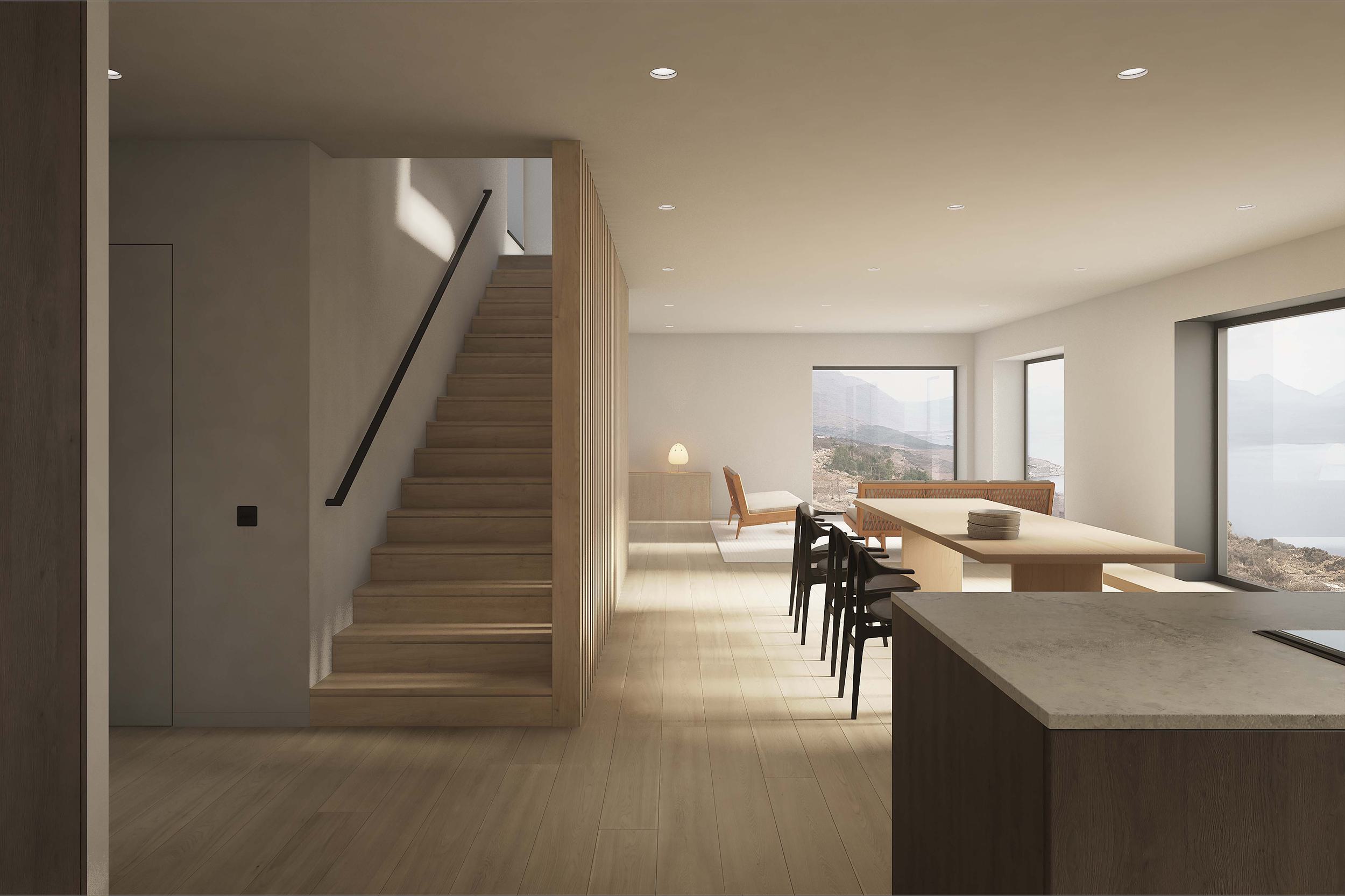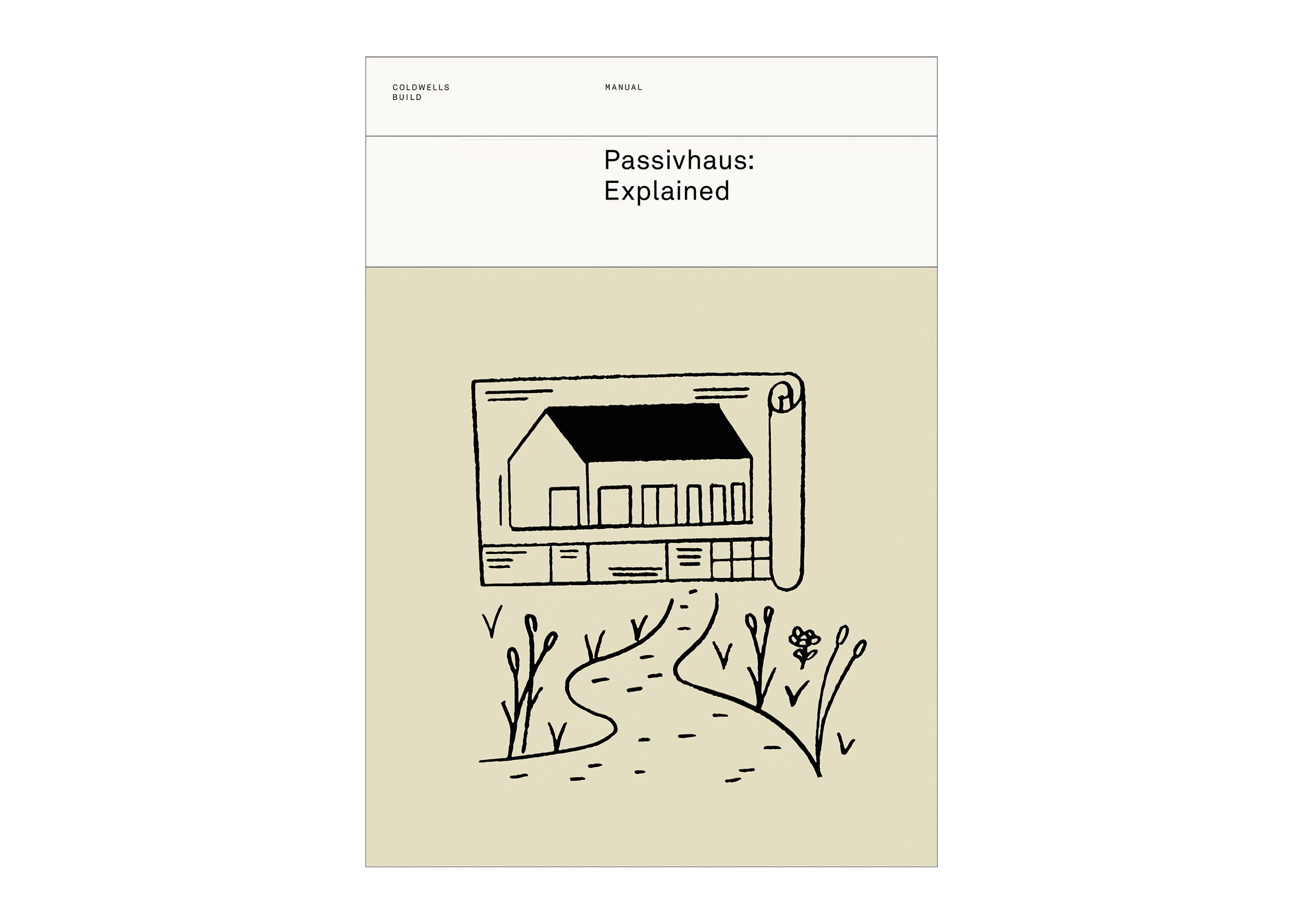
8 Things to Know Before Building a Passivhaus Home
If you’re new to Passivhaus, Rupert Daly, Passivhaus designer and associate director at John Gilbert Architects, provides insight into this low energy building standard. [10 Min Read Time]
Read
Discover how thoughtful design can transform your home into a haven of calm. From clever layouts to sound-absorbing materials, we explore the key ways to build a quieter, more peaceful space.
In a modern world that doesn’t switch off, where phones buzz, traffic hums and adverts blare, the idea of a calm, quiet home is more appealing than ever.
While decluttering might help create the appearance of a peaceful home, true acoustic calm starts much deeper with the way your home is designed and built.
At the forefront of quiet living is the Passivhaus [or Passive House] building standard.
Passivhaus was developed in Germany in the early 1990s to create buildings with ultra-low energy use and superior indoor comfort, but one of its lesser-known superpowers is noise reduction.
The very design principles that make a Passivhaus energy-efficient also create a robust barrier against external sound. These include:
Lloyd Alter, writing for Treehugger, describes how acoustic engineers have tested Passivhaus walls and found they reduce external noise by around 10 decibels. That might not seem like a lot, but because the decibel scale is logarithmic, it translates to a 50% reduction in perceived sound. Imagine cutting background noise in half, day and night.


Noise isn’t just an annoyance. It’s a health hazard. In fact, the World Health Organisation ranks environmental noise as the second biggest environmental threat to public health, after air pollution. Long-term exposure is linked to:
Creating a quieter home improves emotional regulation, mental clarity, and overall wellbeing. In short: quiet doesn’t just sound good, it’s good for you.

Coldwells Build Passivhaus | The McKinley | Snug
Creating a truly peaceful home begins at the design stage. By planning carefully and making thoughtful decisions about your layout and materials, you can significantly reduce noise.
Place bedrooms and living spaces away from roads or other noise sources. A well-planned layout is your first line of defence against external sound.
At Coldwells Build, we use 420mm of tightly packed, recyclable stone wool in our Passivhaus homes, far exceeding the insulation quantities in standard new builds. This high-spec insulation:
Triple-glazed windows offer more than thermal performance. They’re also brilliant at reducing sound transmission. A must-have if your plot is near traffic or urban areas. At Coldwells Build, all of our Passivhaus homes are fitted with high-performance triple-glazed windows as standard.
A tightly sealed home keeps unwanted sound out. Combine this with a Mechanical Ventilation with Heat Recovery [MVHR] system, and you get quiet, filtered fresh air all day long. No need to crack open a window on a noisy street. These systems are whisper-quiet and designed to meet strict noise standards.
Open-plan living has its perks: space, light, flow. But it also comes with acoustic trade-offs. If you’re cooking while someone’s watching TV sounds can clash.
That’s why the Coldwells Build Passivhaus range features flexible layouts that can be adapted with permanent partitions. These smart separations help improve acoustic comfort where it counts.
Not only does a separate utility space add value, but it also keeps noisy appliances out of your main living areas. Washing machines and dryers are best tucked away to preserve your peace.
A well-placed hedge or dense planting isn’t just great for privacy, it also acts as a natural acoustic shield. It helps block traffic noise and filters air pollution too, making your outdoor space more enjoyable year-round.
Quiet Mark is on a mission to make our homes calmer. Its purple logo marks the quietest appliances on the market, from kettles to washing machines. These products are independently tested and proven to reduce household noise.

A skilled joiner with over 20 years’ of experience, Ross began his career as an apprentice building new homes in Aberdeenshire. He broadened his craft, managing builds in Australia and Canada. A certified Passivhaus tradesperson, Ross has spent his career determinedly striving to raise the standard of UK homes.

If you’re new to Passivhaus, Rupert Daly, Passivhaus designer and associate director at John Gilbert Architects, provides insight into this low energy building standard. [10 Min Read Time]
ReadWe’ve created 8 free-to-download guides packed with tips on budgeting, plot finding and self-building. Essential reading for anyone planning to build their home.

An introduction to the Passivhaus standard — what it is, how it works and the steps you can take to achieve it in your new home.
Download